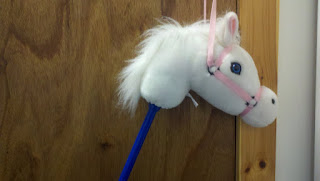On the Great Frontier and Trendelenburg gait patterns.
 The morning was ticking slowly by, which suited my needs and my mood. I am generally at peace with the passage of time. Answers don't always happen quickly - but I like to be ready when they do happen.
The morning was ticking slowly by, which suited my needs and my mood. I am generally at peace with the passage of time. Answers don't always happen quickly - but I like to be ready when they do happen.I have learned to be patient when I am confronted with clinical problems. Sometimes it takes a while to get to a distant destination, and progress is more easily measured by movement toward goals than by the passing of some arbitrary measurement of abstract time. But then like a flash there will be a change, and sometimes you just have to frame a problem a certain way in order to find a good solution.
That is what I have been thinking about all morning ever since Sandy left.
Sandy is five years old has left hemiplegia which causes her to walk with her left arm flexed above her shoulder so that her hand is almost touching her ear. Her left leg is stiff and she has a Trendelenburg gait. She is receiving physical therapy but her gait pattern is becoming habitual. She still has hip weakness but the pattern of holding her left arm so high and keeping her left leg stiff is as much behavioral and habitual as it is physical.
During therapy we work on activities that strengthen her left limbs and we developed a positive behavioral program that reinforces a more symmetric gait pattern.
I was thinking this morning that opportunity stretches in front of Sandy like the promise of a vast frontier - but how could she cross that frontier with such an awkward gait pattern? The largeness and openness of opportunity is daunting. It has been so difficult to help her change her habits - and without a change in habits she has little opportunity to experience movement that will strengthen her weak muscles. Where does one begin?
When problems are present, mythic solutions can be created by mythic characterization. Who would be best to solve a problem of tackling the vast frontier? None other than Natty Bumppo! Natty Bumppo was resourceful, and heroic, and moral, and pragmatic - all at the same time. I fancied that he would know how to solve this problem of persistent and habitual gait dysfunction if it were within his purview.
As Sandy lurched and tripped her way around the clinic this morning my eyes focused on a toy that rarely gets used: the stick ponies. Like a flash of instinct I grabbed for the toy like it was my trusty flintlock. One shot, one kill. This was my solution.
I mounted my faithful steed with left arm extended to the stick and holding the bridle with a flexed right arm. I encouraged Sandy to do the same, modeling the correct arm position that was counter to her habit. Then we began galloping, left foot first, causing her to have to flex her left hip and left knee while propelling off of the stability of a stiffened right leg as we galloped. Again, totally counter to her habitual pattern.
It was an absolute success as we galloped onto the Great Plains ahead, new 'tools' at the ready to counteract her habitual gait pattern.
It is my belief that Natty Bumppo would have approved.


Comments